News
Is “make more birdies” really the best advice to shoot lower scores?
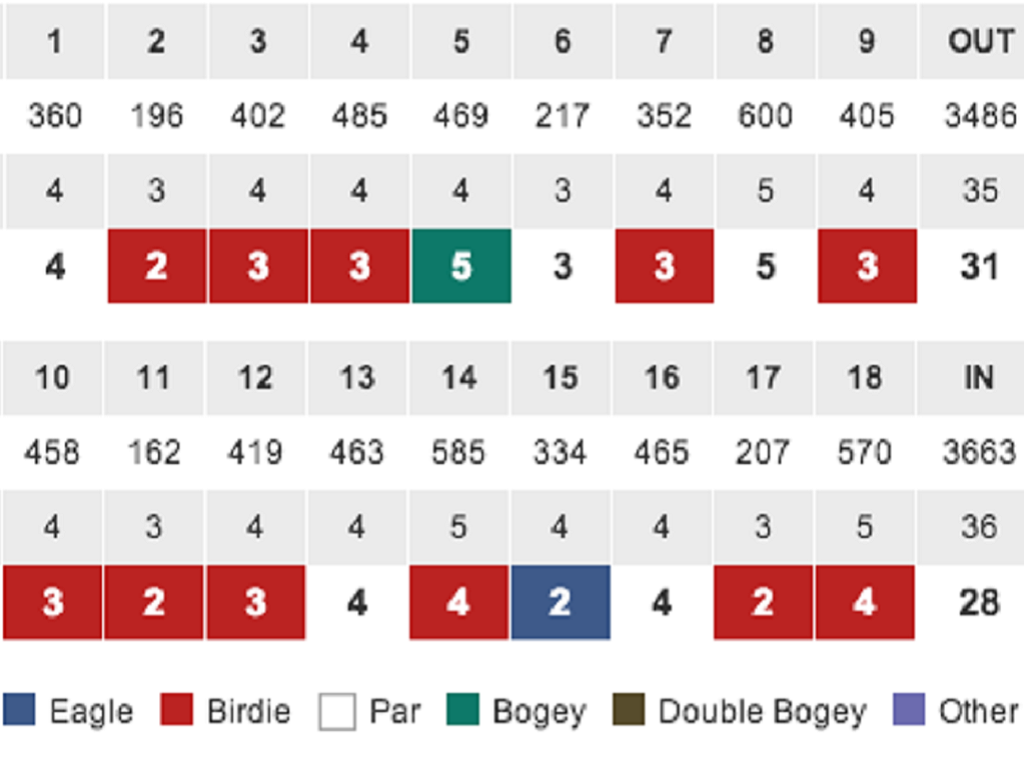
I often hear golfers say, “I need to make more birdies to shoot lower scores.” This statement has been uttered by the team I currently coach, and through three tournaments this fall, it got me wondering how accurate that statement was for our level of play.
Our players’ scoring averages range from 74 to 87, having played in a minimum of two tournament rounds and up to seven tournament rounds. Most often, I have heard the statement above from our players who are in the middle to higher end of the scoring averages. So, I took a look into our scoring breakdown using the data we collect with GameGolf.
Here are the rankings of birdies per round for the seven players who have traveled this fall
| 1 | 2.7 |
| 2 | 1.42 |
| 3 | 1.17 |
| 4 | 1 |
| 5 | 0.5 |
| 6 | 0.42 |
| 7 | 0.33 |
The difference from the top to the seventh spot is 1.09 birdies per round. The player with the top spot has a scoring average of 74, and the player in seventh spot has a scoring average of 84.67.
Here are the rankings of double bogey/worse for the seven players who have traveled this fall
| 1 | 0.42 |
| 2 | 0.85 |
| 3 | 1 |
| 4 | 1.42 |
| 5 | 2 |
| 6 | 2.5 |
| 7 | 4 |
The difference from the top to the seventh spot is 3.58 doubles/worse per round. Again the player at the top has the 74 scoring average and the player at the bottom has the 87 scoring average.
Diving a little deeper, the players on the team with the top three scoring averages (74, 77.29 and 78) occupy the top three spots in both of these rankings. And taking a look at all the players’ differentials, their rank stays the same compared to their scoring average rank.
The fact that many golfers overlook when making the statement “I need to make more birdies to score better” is that each hole accounts for about 5.5 percent of your round. So, if we take our player who averages one birdie (minus 1) and 2.5 doubles/worse per round (plus 5, conservatively), 5.5 percent of her round is birdies and 13.75 percent of her round is doubles/worse.
If she were to simply focus on making more birdies per round to “balance out” the current 2.5 doubles/worse per round, she would need to increase to five birdies per round. That would be a jump up to 27.5 percent of her round. Compare that to shift a focus to minimizing the doubles/worse category. If this same player could even shave her doubles/worse to 1.5 per round (plus 3, conservatively), it accounts for 8.25 percent of her round.
If we take a look at the top five scoring averages from the LPGA, Women’s DI and Women’s DII we see the scoring averages range from 68 to 72. While the birdies per round range from 2.4 to 4.8. An interesting thing to note from these numbers is that both the low scoring average and best birdies per round do not come from the LPGA players. While difficulty of the course setup may play into this factor, it can highlight that those women who are playing to make a living are making sure that they are keeping their cards clean of the big numbers because they do not have enough holes to make up for those errors with birdies.
While birdies are always more fun to celebrate, in stroke play you are better off to learn how to turn doubles into bogeys and bogeys into pars for better scores.
- LIKE100
- LEGIT19
- WOW0
- LOL0
- IDHT1
- FLOP0
- OB0
- SHANK8
Equipment
Spotted: Tommy Fleetwood’s TaylorMade Spider Tour X Prototype putter
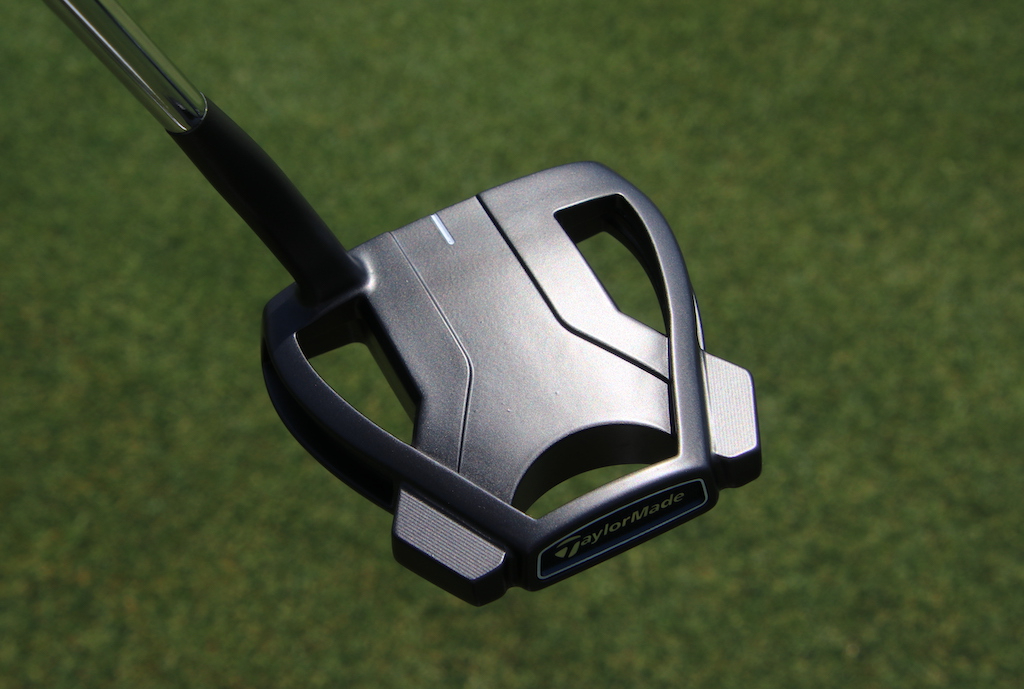
Tommy Fleetwood has been attached to his Odyssey White Hot Pro #3 putter for years now. However, this week at the Wells Fargo Championship, we did spot him testing a new putter that is very different, yet somewhat similar, to his current gamer.
This new putter is a TaylorMade Spider Tour X head but with a brand new neck we haven’t seen on a Spider before. A flow neck is attached to the Spider head and gives the putter about a 1/2 shaft offset. This style neck will usually increase the toe hang of the putter and we can guess it gets the putter close to his White Hot Pro #3.
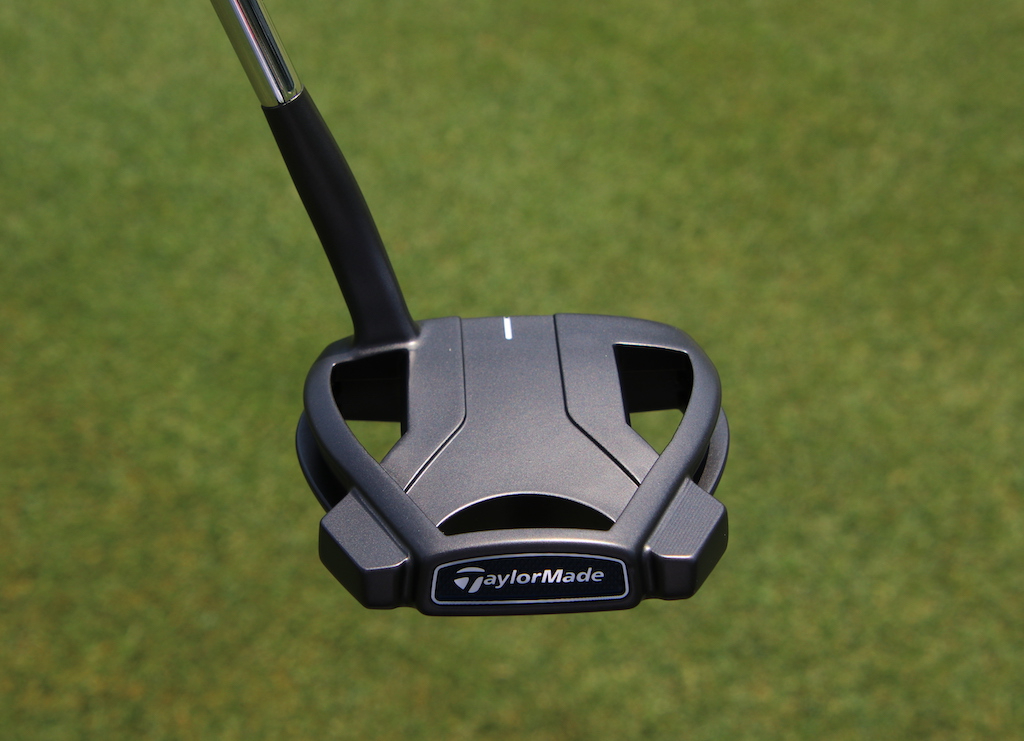
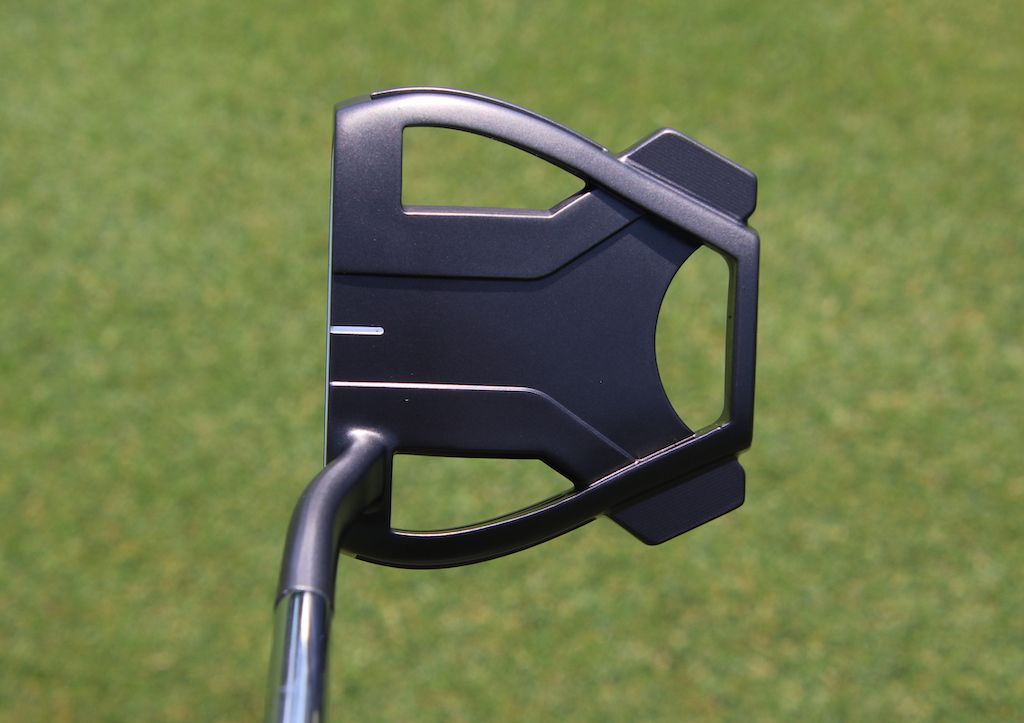
Another interesting design is that lack of TaylorMade’s True Path alignment on the top of the putter. Instead of the large white center stripe, Tommy’s Spider just has a very short white site line milled into it. As with his Odyssey, Tommy seems to be a fan of soft inserts and this Spider prototype looks to have the TPU Pure Roll insert with 45° grooves for immediate topspin and less hopping and skidding.
The sole is interesting as well in that the rear weights don’t look to be interchangeable and are recessed deep into the ports. This setup could be used to push the CG forward in the putter for a more blade-like feel during the stroke, like TaylorMade did with the Spider X Proto Scottie Scheffler tested out.
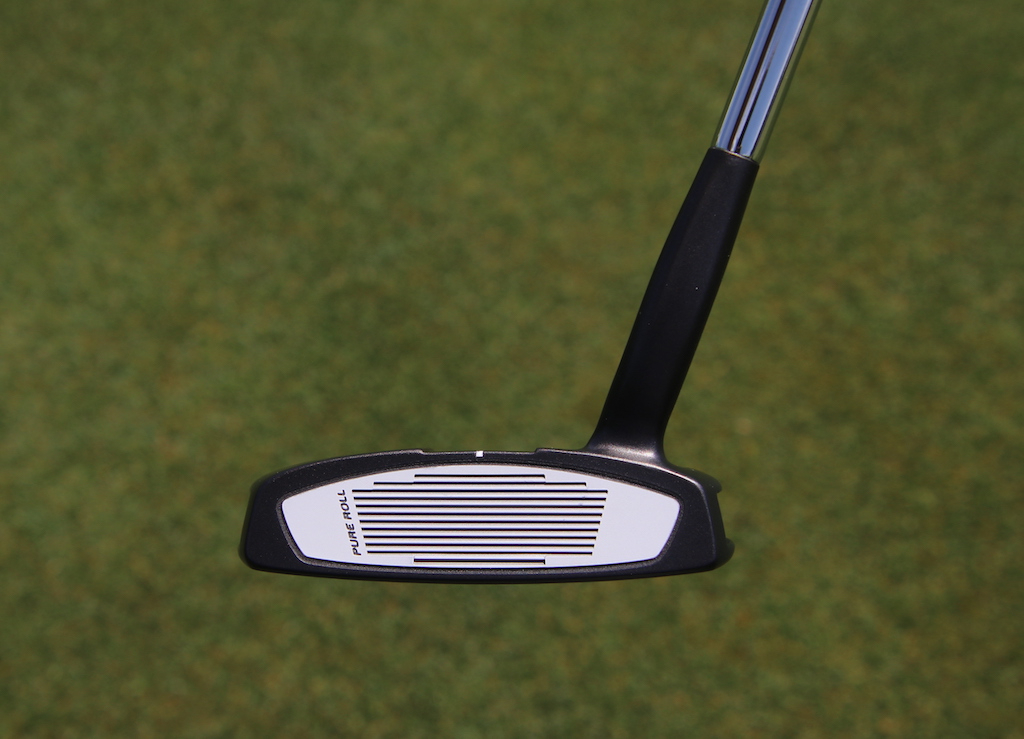
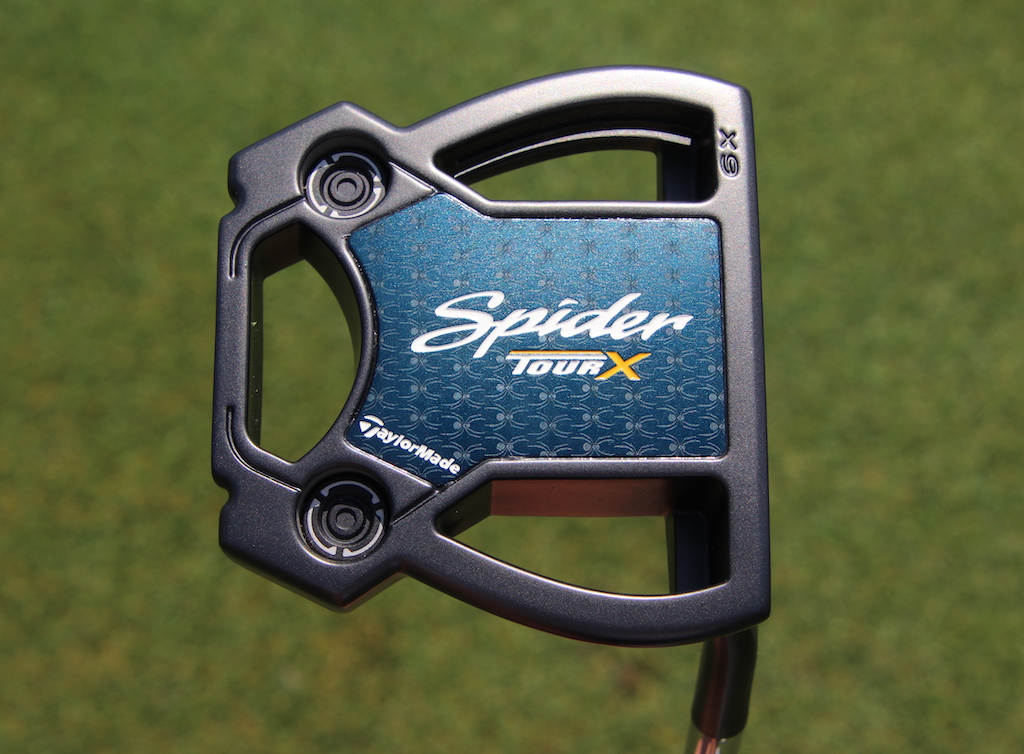
Tommy’s putter is finished off with an older Super Stroke Mid Slim 2.0 grip in blue and white. The Mid Slim was designed to fit in between the Ultra Slim 1.0 and the Slim 3.0 that was a popular grip on tour.
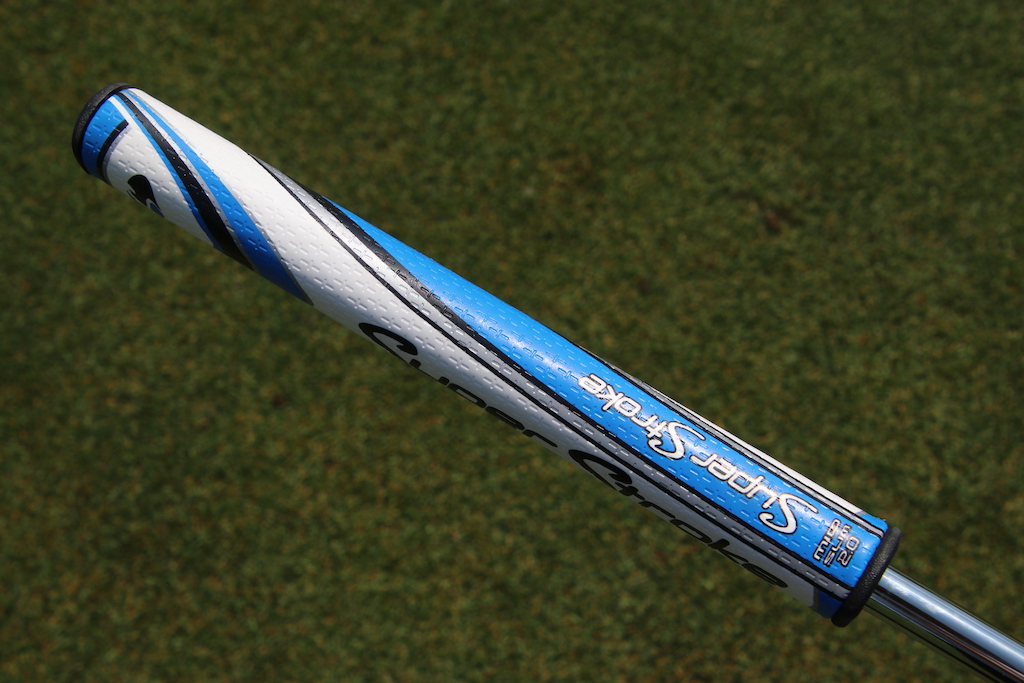
- Check out the rest of our photos from the 2024 Wells Fargo Championship
- LIKE13
- LEGIT2
- WOW2
- LOL1
- IDHT0
- FLOP0
- OB0
- SHANK0
Equipment
Rickie Fowler’s new putter: Standard-length Odyssey Jailbird 380 in custom orange

Editor’s note: This is an excerpt from a piece our Andrew Tursky originally wrote for PGATour.com’s Equipment Report. Head over there for the full article.
…The Jailbird craze hasn’t really slowed down in 2024, either. According to Odyssey rep Joe Toulon, there are about 18-20 Jailbird putter users on the PGA TOUR.
Most recently, Akshay Bhatia won the 2024 Valero Texas Open using a broomstick-style Odyssey Jailbird 380 putter and Webb Simpson is switching into a replica of that putter at the 2024 Wells Fargo Championship.
Now, Fowler, who essentially started the whole Jailbird craze, is making a significant change to his putter setup.
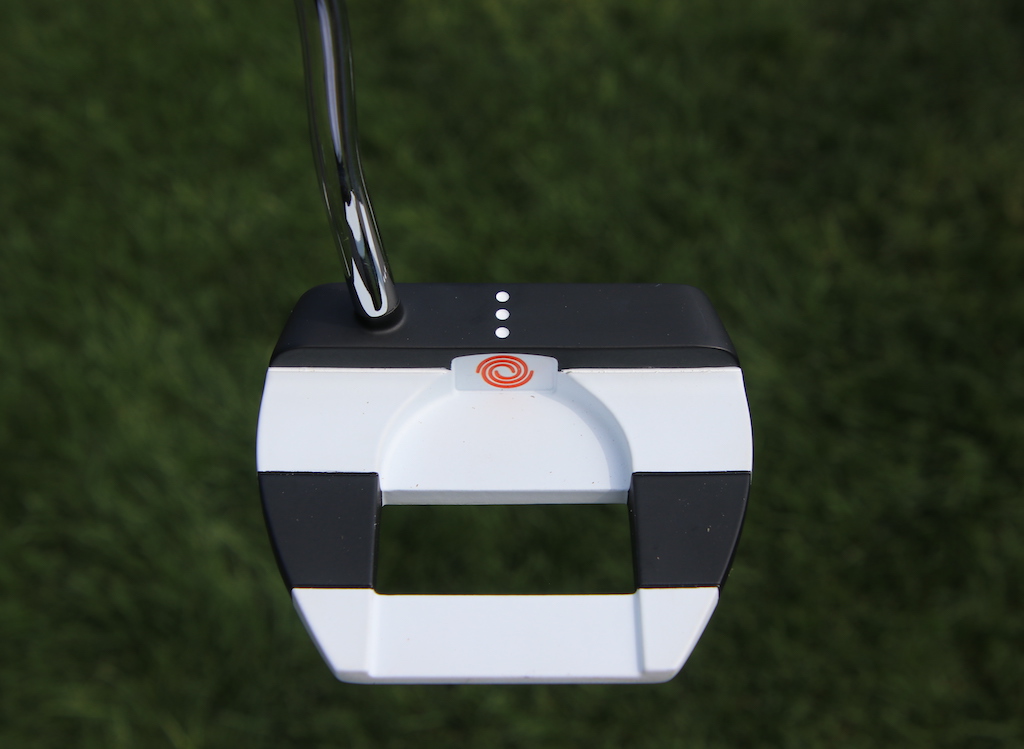
Fowler, who has had a couple weeks off since the 2024 RBC Heritage, started experimenting with a new, custom-orange Jailbird 380 head that’s equipped with a standard 35-inch putter build, rather than his previous 38-inch counter-balanced setup.
According to Fowler, while he still likes the look and forgiveness of his Jailbird putter head, he’s looking to re-incorporate more feel into his hands during the putting stroke.
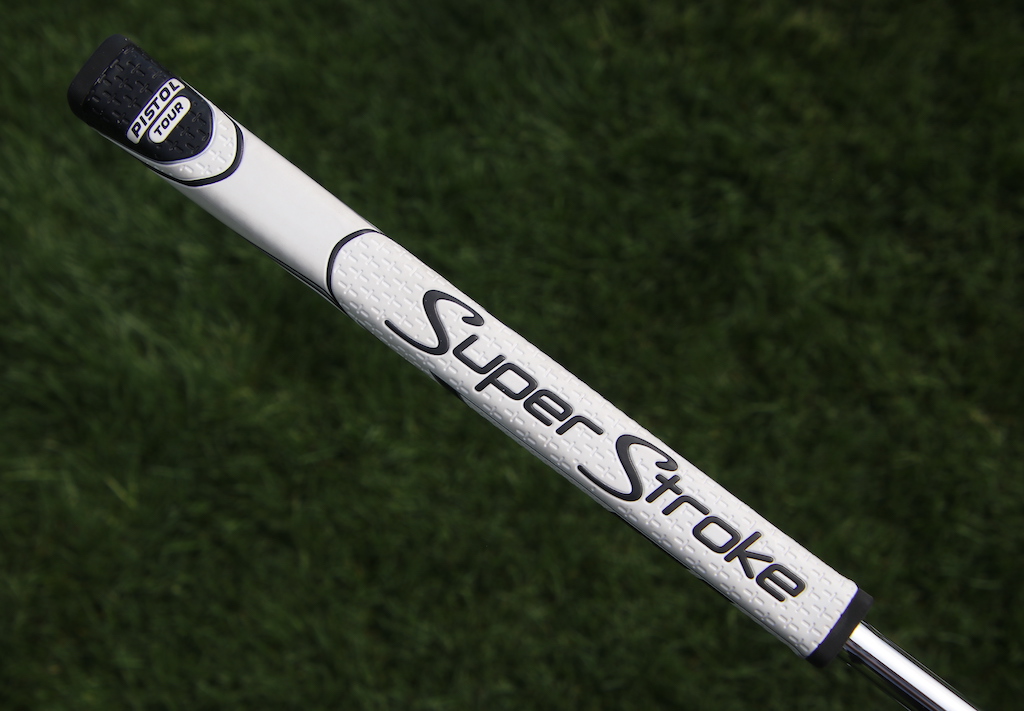
He told GolfWRX.com on Tuesday at the Wells Fargo Championship that the 38-inch counterbalanced setup “served its purpose” by helping him to neutralize his hands during the stroke, but now it’s time to try the standard-length putter with a standard-size SuperStroke Pistol Tour grip to help with his feel and speed control.
Although Fowler was also spotted testing standard-length mallets from L.A.B. Golf and Axis1 on Tuesday, he confirmed that the custom Odyssey Jailbird 380 is the putter he’ll use this week at the 2024 Wells Fargo Championship.
Head over to PGATour.com for the full article.
- LIKE29
- LEGIT8
- WOW3
- LOL4
- IDHT0
- FLOP2
- OB0
- SHANK5
Equipment
Details on Justin Thomas’ driver switch at the Wells Fargo Championship
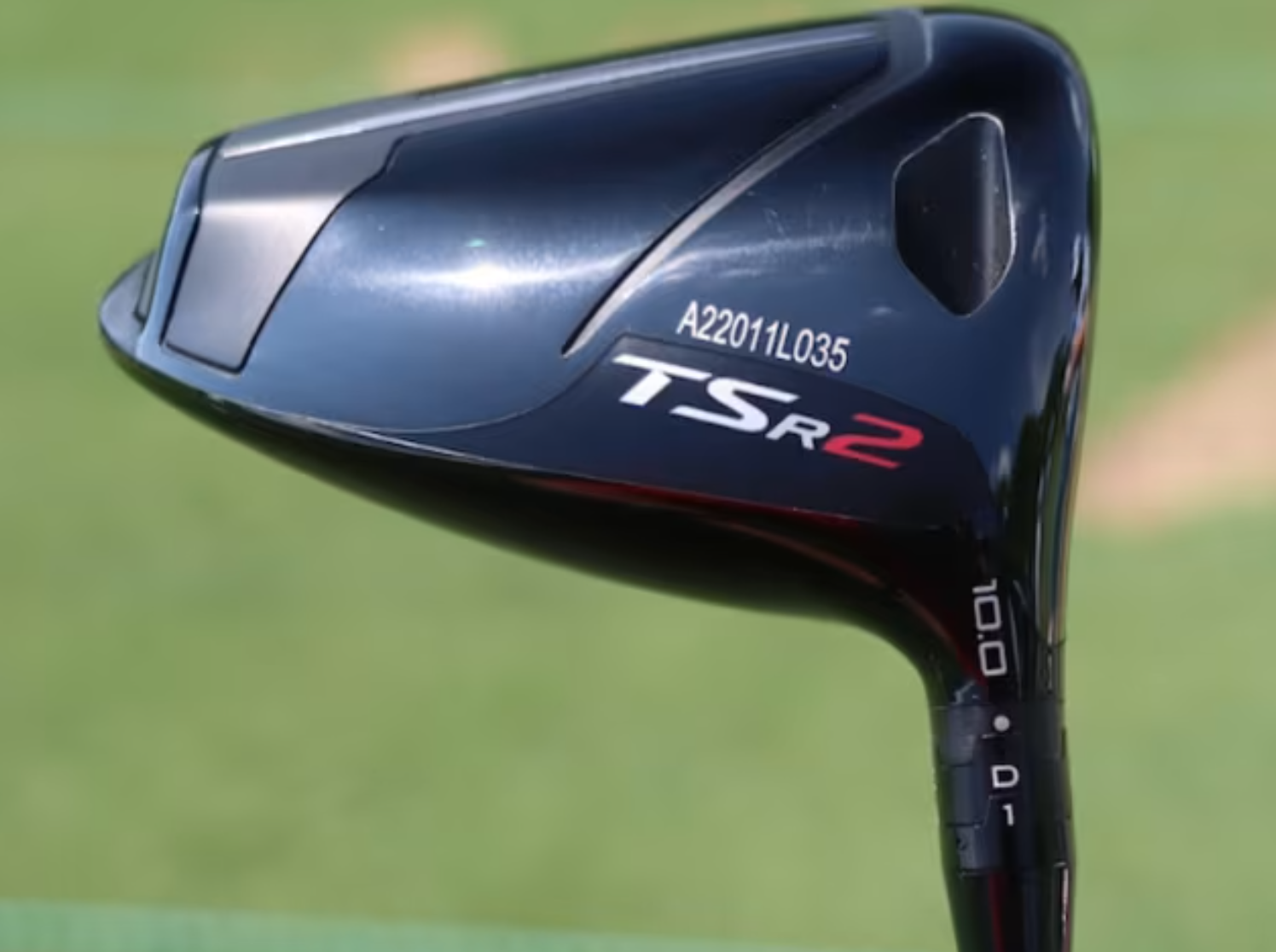
Editor’s note: This is an excerpt from a piece our Andrew Tursky originally wrote for PGATour.com’s Equipment Report. Head over there for the full article.
So, with a couple of weeks off following his latest start at the 2024 RBC Heritage, Thomas sought to re-address his driver setup with the remote help of Titleist Tour fitting expert J.J. Van Wezenbeeck. About two weeks ago, Thomas and Van Wezenbeeck reviewed his recent driver stats, and discussed via phone call some possible driver and shaft combinations for him to try.
After receiving Van Wezenbeeck’s personalized shipment of product options while at home, Thomas found significant performance improvements with Titleist’s TSR2 head, equipped with Thomas’ familiar Mitsubishi Diamana ZF 60 TX shaft.
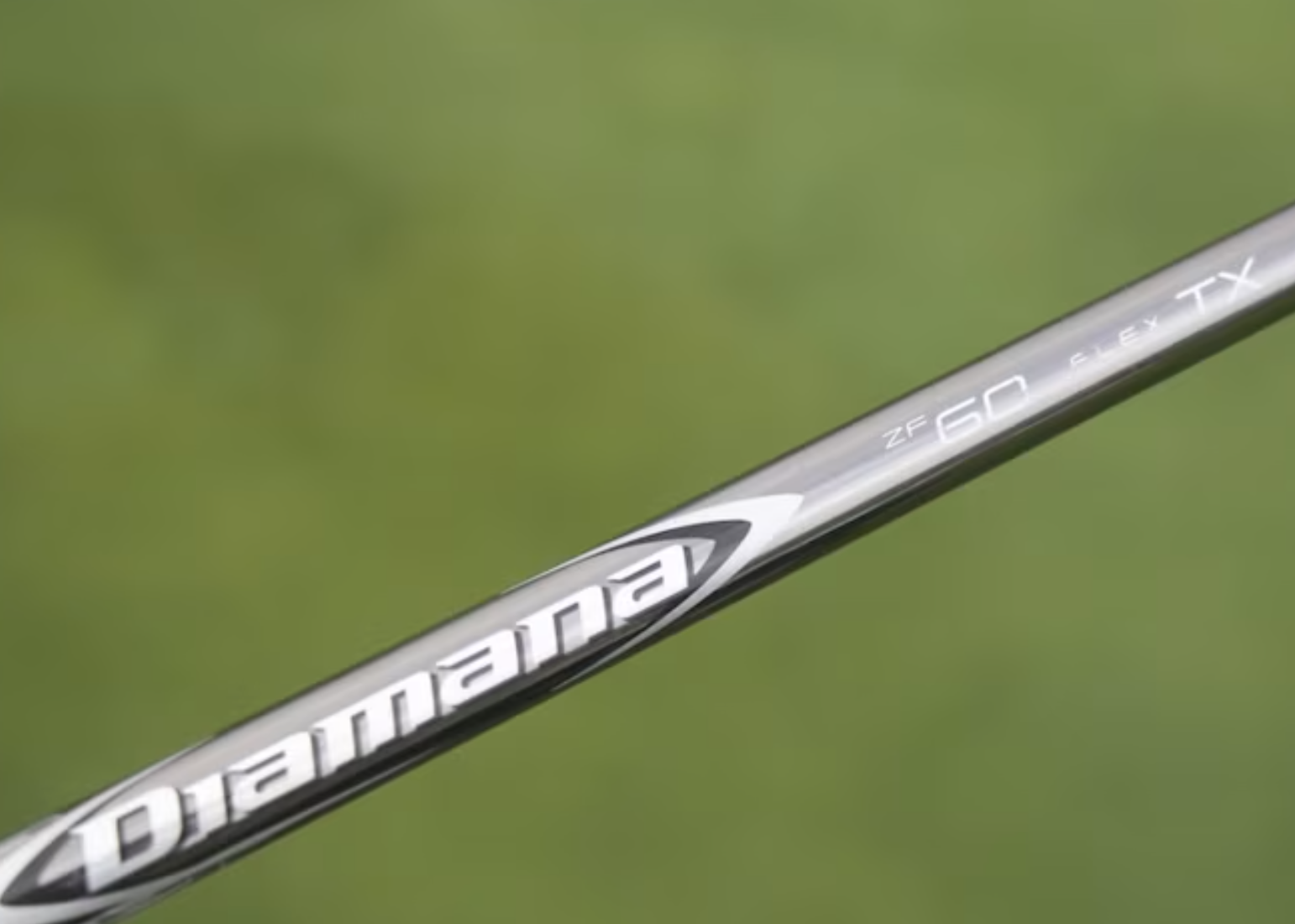
Compared to Thomas’ longtime TSR3 model, the TSR2 has a larger footprint and offers slightly higher spin and launch characteristics.
According to Van Wezenbeeck, Thomas has picked up about 2-3 mph of ball speed, to go along with 1.5 degrees higher launch and more predictable mishits.
“I’d say I’d been driving it fine, not driving it great, so I just wanted to, honestly, just test or try some stuff,” Thomas said on Tuesday in an interview with GolfWRX.com at Quail Hollow Club. “I had used that style of head a couple years ago (Thomas used a TSi2 driver around 2021); I know it’s supposed to have a little more spin. Obviously, yeah, I’d love to hit it further, but if I can get a little more spin and have my mishits be a little more consistent, I felt like obviously that’d be better for my driving…
“This (TSR2) has been great. I’ve really, really driven it well the week I’ve used it. Just hitting it more solid, I don’t know if it’s the look of it or what it is, but just a little bit more consistent with the spin numbers. Less knuckle-ball curves. It has been fast. Maybe just a little faster than what I was using. Maybe it could be something with the bigger head, maybe mentally it looks more forgiving.”
Head over to PGATour.com for the full article.
- LIKE19
- LEGIT1
- WOW1
- LOL2
- IDHT0
- FLOP0
- OB0
- SHANK8
-

 19th Hole3 weeks ago
19th Hole3 weeks agoJustin Thomas on the equipment choice of Scottie Scheffler that he thinks is ‘weird’
-

 19th Hole3 weeks ago
19th Hole3 weeks ago‘Absolutely crazy’ – Major champ lays into Patrick Cantlay over his decision on final hole of RBC Heritage
-

 19th Hole2 weeks ago
19th Hole2 weeks agoLET pro gives detailed financial breakdown of first week on tour…and the net result may shock you
-

 19th Hole2 days ago
19th Hole2 days agoReport: LIV star turns down PGA Championship invite due to ‘personal commitments’
-

 19th Hole1 week ago
19th Hole1 week agoGary Player claims this is what ‘completely ruined’ Tiger Woods’ career
-

 19th Hole3 weeks ago
19th Hole3 weeks agoTaylorMade signs 15-year-old AJGA Rolex Junior Player of the Year to an NIL contract
-

 Whats in the Bag2 weeks ago
Whats in the Bag2 weeks agoTeam McIlowry (Rory McIlroy, Shane Lowry) winning WITBs: 2024 Zurich Classic
-

 Equipment1 week ago
Equipment1 week agoGolf fans left surprised by LIV’s choice of course for its 2024 individual championship event



















Jack Nash
Nov 21, 2018 at 12:48 pm
Make more birdies or make fewer mistakes. Like they say “golf is a game of how good your misses are”.
Obee
Nov 21, 2018 at 11:52 am
Great post. Thanks. You MUST be able to make 12 – 16 pars per round on a regular basis to play below scratch golf. And the other 2 to 6 holes should be bogeys or birdies the overwhelming majority of the time.
Simple game when you think of it that way, but the devil is in the details, of course.
WHY do so many otherwise talented, athletic players make so many bogey and doubles?
The answer completely depends on each player. For some, it often starts with poor decision or a poor state of mind. For others, lots of bogeys and doubles are inevitable because they have a pronounced swing flaw(s) that will simply result in very inconsistent ball-striking.
They key is to identify each player’s weaknesses and develop a strategy for that individual player to make MORE pars and fewer doubles (which, consequently, will almost always result in more birdies as well).
Ron
Nov 21, 2018 at 11:37 am
Good article – with numerical support to back it up (esp. since golf is about numbers!)
Speaking of numbers, I’m 78, a low single-digit, and this year have my lowest scoring average ever. How? Several ways. I practice wedges a lot. I play the appropriate tees (~6000 yd courses). But mainly, I’ve learned how to salvage bogeys on holes if I get out of position: Put the ball back in play, try to get within 100 yards of the green, accept getting down in no more than three from there and move on. Not as exciting as cutting the corner of the dogleg or going over the hazard or some other hero shot, but – on average – lowers scores. Do I make a lot of birdies? Occasionally. But I’ve also had birdie free rounds with only three or four bogeys.
Adrian
Nov 21, 2018 at 2:58 am
I am torn by this article because I believe that every golfer as they improve will learn to keep big numbers off the scorecard but there must come a time when you are capable of making your fair share of birdies or your improvement will stall. If you can make birdies in bunches it is a matter of time before you eliminate big numbers. Birdies or better are the only eraser on the scorecard and the better you get at the game the fewer doubles or worse you make and the more birdies or better you will make…hopefully !!
Peter McGill
Nov 21, 2018 at 1:23 am
But if I can turn those triples and doubles into birdies…?
Stephane Barras
Nov 21, 2018 at 12:57 am
Could Erin, the author, give us an answer about Alexdub comments ?
PSG
Nov 20, 2018 at 2:40 pm
This article is kinda nonsensical because it assumes the goal is to shoot the best score possible and not to win the tournament (which are not the same thing).
If -10 wins the tournament, who cares if the college or LPGA player keeps “bogies off the card” and shoots -2? They still lost. Better to shoot +4 at least trying to shoot -10.
The goal of competitive golf isn’t to post the best score you can every round. Its to win the tournament. For a dude who shoots 95 on a Sunday this is pretty good advice. For a dude who is trying to get through Q-School or keep his card this is awful advice, as all that matters is how he does *Relative to the other players*.
If you are trying to make your personal bests (good for you!) then this is right. If you are trying to beat a field (where someone is likely to go very low) then this is wrong.
Taylor
Nov 20, 2018 at 9:37 am
When I tried to turn the corner, I had a guy tell me “give yourself 13-14 birdie putts a round. Pretty much guarantees and even par or better round as long as you stay away from the big numbers
TheCityGame
Nov 20, 2018 at 8:36 am
Any advice that starts with “make more birdies” or “avoid more bogeys” is basically looking at symptoms and not cures. It’s often presented like bogeys and birdies are in opposition to each other. . .as if gunning for birdies on every hole leads a player to too many doubles.
It doesn’t work like that. Players who make more birdies are also players who make fewer bogeys. This is true of amateurs and the pro tour (go look at stats for bogey avoidance and birdie rate. . .it’s almost all the same guys at the top of the list and they’re also the best scorers. https://www.pgatour.com/stats/stat.02414.2018.html and https://www.pgatour.com/stats/stat.156.2018.html)
Advice should be “get better” — whatever that means for an individual player — and when a player “gets better”, she will make more birdies and avoid over-par scores a lot more.
I will agree. . as I’ve gotten better, and more regularly shoot in the low/mid 70’s, the most important thing in scoring is over-par avoidance.
But, that hasn’t come from a strategy of not trying to make birdies. I’m still trying to make birdies all the time. And I make more than I used to. I also avoid big numbers more often.
So, no, “make more birdies” is not really the best advice to shoot lower scores, but neither is “make fewer over-pars”. The best advice to shoot lower scores is be a better golfer (more accurate, longer, better short game, etc.)
Murv
Nov 20, 2018 at 8:30 am
Pretty much stating the obvious for average players.
Duffy McHackster
Nov 19, 2018 at 9:24 pm
Nice to see an article that makes sense to us less skilled types. I manage about a dozen birdies a season, so not at all realistic to expect much improvement there. We can learn to play smarter, manage the course better, and work on the things we can realistically improve. As we get older, we aren’t likely to gain distance, so we need to understand our limitations and and not bite off more than we can chew.
alexdub
Nov 19, 2018 at 10:09 am
Am I missing something? Looking at the first data table concerning average birdies per round, the difference between the first spot (2.7) and the seventh spot (.33) appears to be 2.37 — not the 1.09 stated in the article.
Josh
Nov 19, 2018 at 10:47 am
Think he meant top and second.
Josh
Nov 19, 2018 at 10:48 am
I can’t type. He meant second and seventh.
BL
Nov 19, 2018 at 9:58 am
This is by far the smartest post ever on this site! Well done Erin!